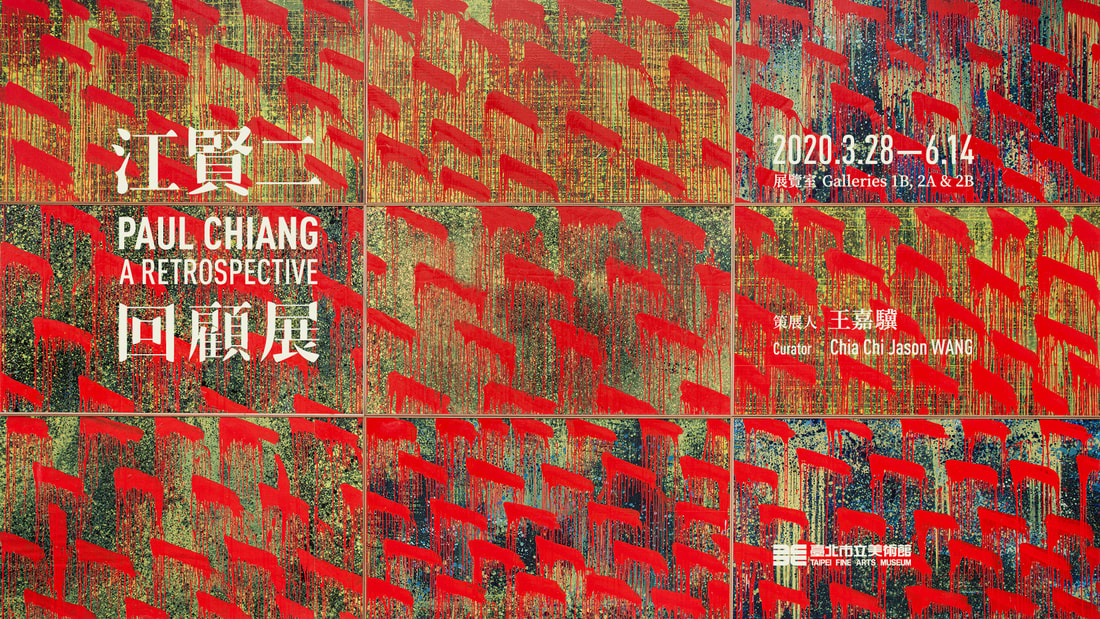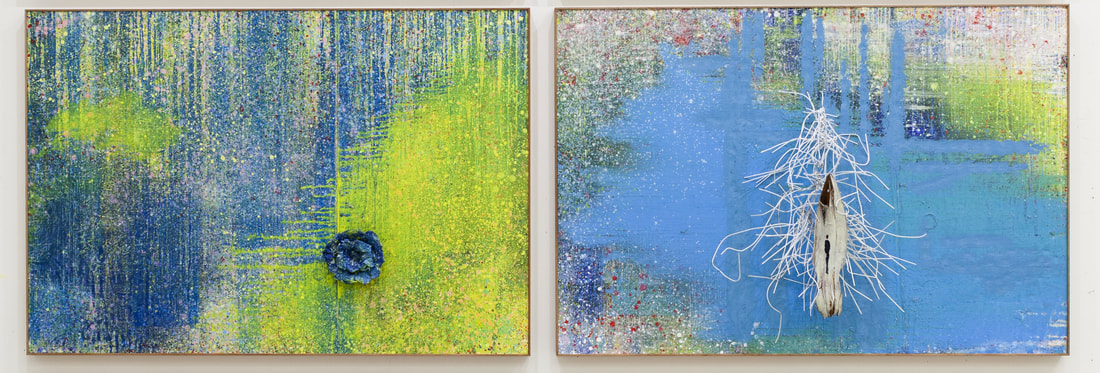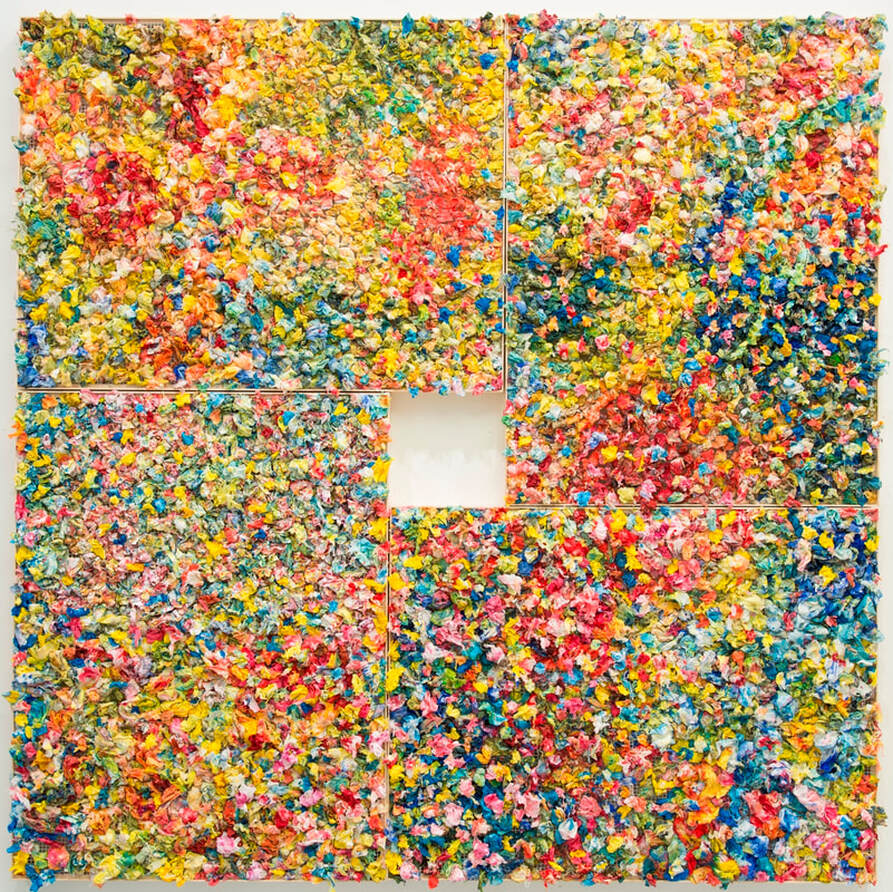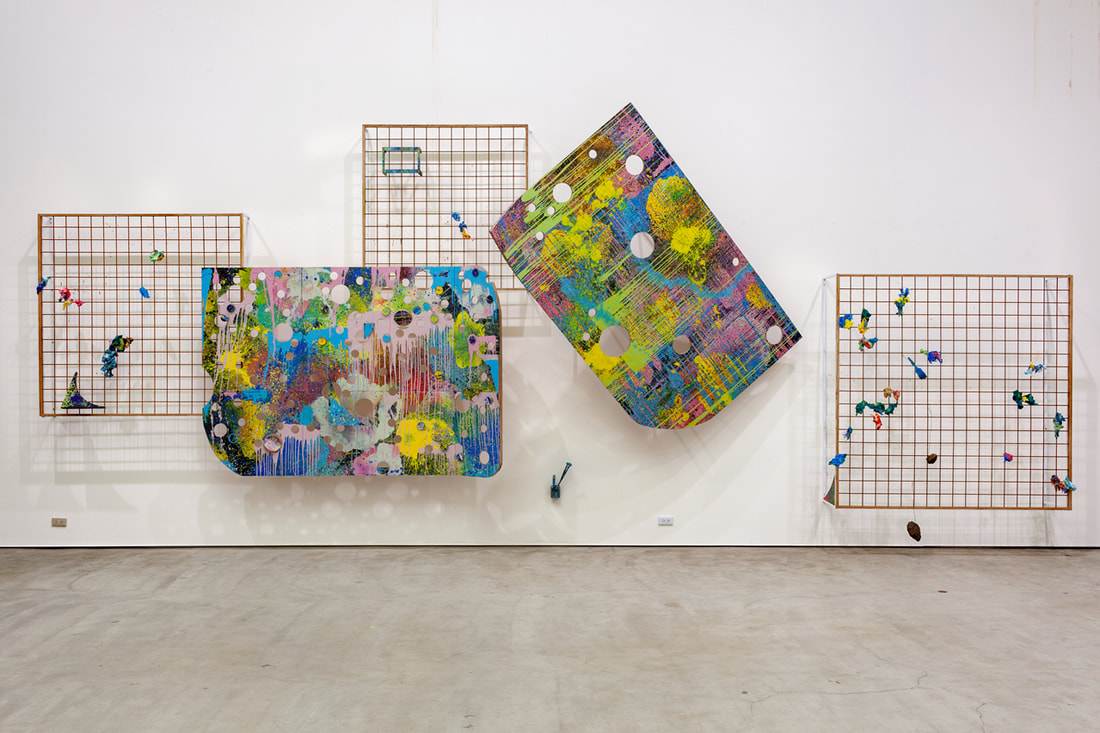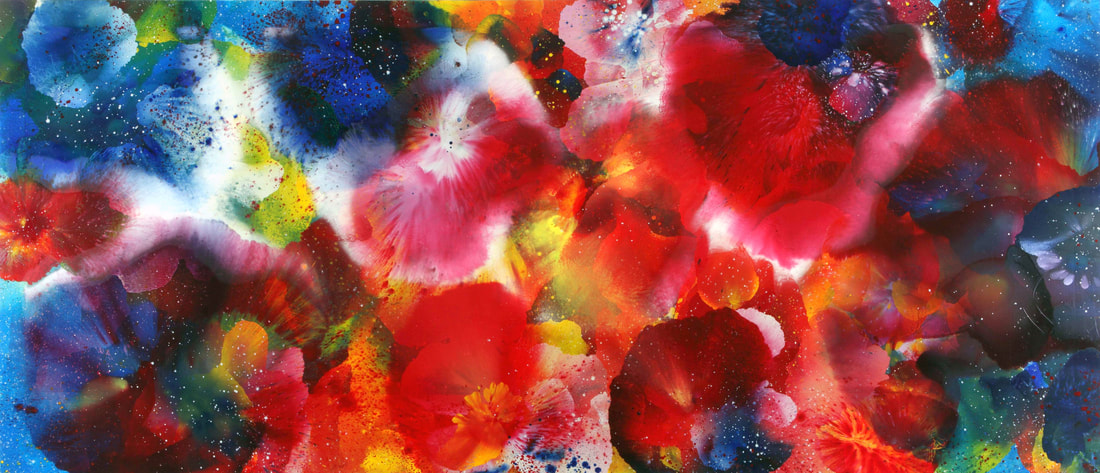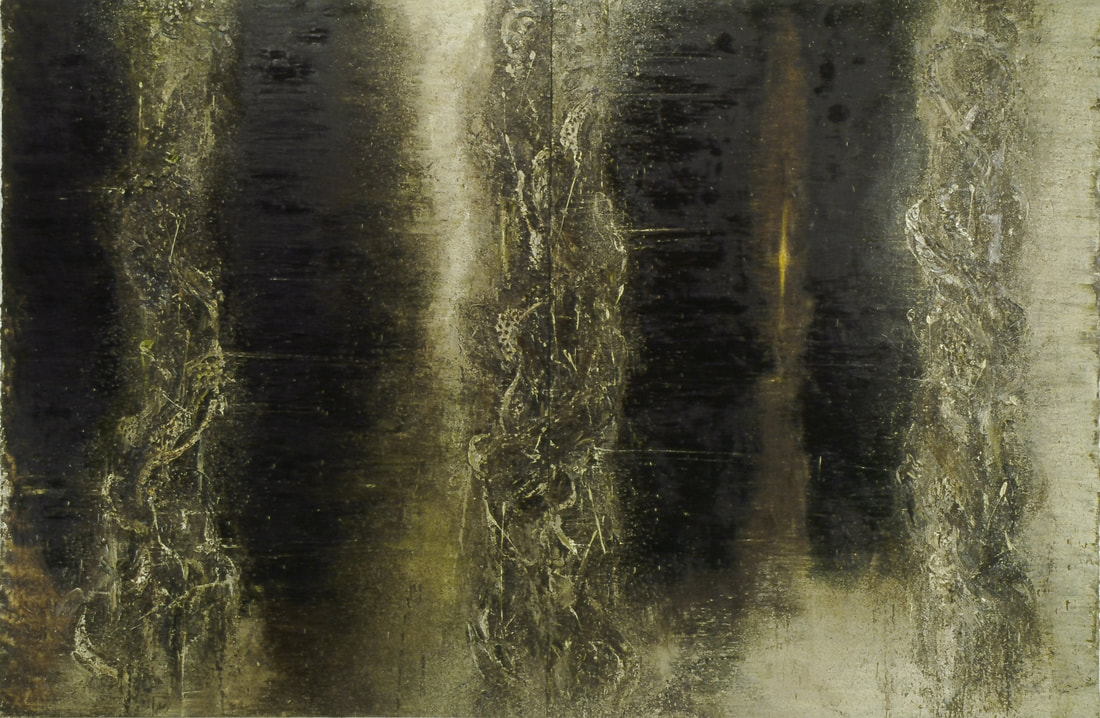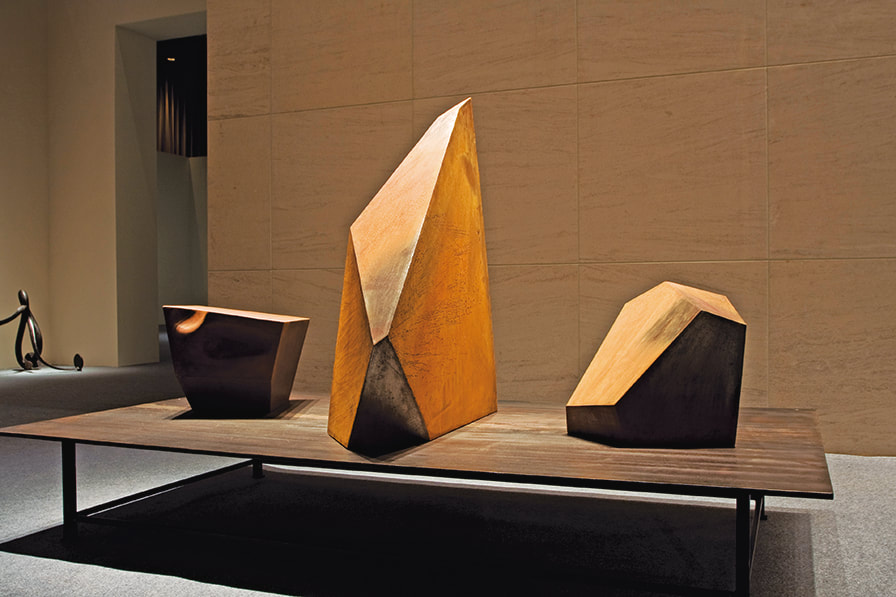The four seasons of Jinzun through Paul Chiang’s eyes
Early 2020, Paul Chiang was invited by the Taipei Fine Arts Museum (TFAM) to have a solo exhibition. The exhibition, Paul Chiang: A Retrospective exhibits Chiang’s 55-years of creation. It is the largest and most complete collection of his lifetime works.
Born in Taichung, Taiwan in 1942, Chiang left his birthplace to Paris, then New York in his early twenties without the intention of returning. While living in New York for 30-years and traveling the world, he never imagined his home-country to one day be the place that would bring him most inspiration.
Paintings produced during the time that Chiang was in New York were largely in black and gray shades, this period is known as the period of darkness where Chiang’s paintings were serious and depressed. Chiang said, ‘In the past, my paintings were a reflection of my-self, my lifestyle, and environment – it was somber and heavy.’ Taitung unexpectedly changed Chiang; it is where his work began to evolve.
Over 12 years ago, Chiang and spouse, Claire Fan, discovered Jinzun, Taitung, while driving along the East Coastline of Provincial Highway 11. Chiang said, ‘In our first visit, tall cluttered weeds hid the ocean view, but even so it felt like the right place to settle.’ When Chiang moved to Taitung, his art changed dramatically; Jinzun became a pivotal part of his life as an artist.
Born in Taichung, Taiwan in 1942, Chiang left his birthplace to Paris, then New York in his early twenties without the intention of returning. While living in New York for 30-years and traveling the world, he never imagined his home-country to one day be the place that would bring him most inspiration.
Paintings produced during the time that Chiang was in New York were largely in black and gray shades, this period is known as the period of darkness where Chiang’s paintings were serious and depressed. Chiang said, ‘In the past, my paintings were a reflection of my-self, my lifestyle, and environment – it was somber and heavy.’ Taitung unexpectedly changed Chiang; it is where his work began to evolve.
Over 12 years ago, Chiang and spouse, Claire Fan, discovered Jinzun, Taitung, while driving along the East Coastline of Provincial Highway 11. Chiang said, ‘In our first visit, tall cluttered weeds hid the ocean view, but even so it felt like the right place to settle.’ When Chiang moved to Taitung, his art changed dramatically; Jinzun became a pivotal part of his life as an artist.
The first floor of TFAM exhibits works from since he moved to Taitung, and at the largest exhibition hall on the same level, he created the Jinzun series for its particular space. All the materials from this series originates from Taitung.
The colours depicted in Jinzun – Autumn are colours that Chiang sees in the Jinzun autumn. Chiang said, ‘At the end of each work day, I sit and have a coffee observing the reflections of the sun entering into the dark night sky. I watch the ocean reflecting the colours of sunset – orange-red, golden-yellow.’ At sunset, the colours of the sun changes at every moment. Chiang said, ‘Gold is one of the most challenging colours to paint, I tried for a long time to paint the sparkle of the sky. The most challenging part of painting Jinzun – Autumn was to replicate the sparkle.’ Chiang said, ‘Twenty, thirty years ago, when I spent summers in St. Barth’s painting, the colours I used were not at all the same as today.’ With St. Barth’s endless green-blue ocean, Chiang expressed what he saw with dark heavy colours of black, blue, and grey hues.
At the top-right corner of Jinzun – Summer, is an abstract fence; Chiang said, ‘I hope what people will notice is the sun shining through the fence reflecting the shadow. Although this piece is two-dimensional, it is meant to have a three-dimensional effect.’ At Chiang’s Jinzun residence, there are many coconut trees to be found; one piece from the Jinzun – Summer series has a fallen coconut tree leaf, and on the leaf, is the figure of a person. This leaf has been in Chiang’s studio for three to four years. Chiang said, ‘I kept it in my studio, wanting to find a way to express it, and now I have.’
The colours depicted in Jinzun – Autumn are colours that Chiang sees in the Jinzun autumn. Chiang said, ‘At the end of each work day, I sit and have a coffee observing the reflections of the sun entering into the dark night sky. I watch the ocean reflecting the colours of sunset – orange-red, golden-yellow.’ At sunset, the colours of the sun changes at every moment. Chiang said, ‘Gold is one of the most challenging colours to paint, I tried for a long time to paint the sparkle of the sky. The most challenging part of painting Jinzun – Autumn was to replicate the sparkle.’ Chiang said, ‘Twenty, thirty years ago, when I spent summers in St. Barth’s painting, the colours I used were not at all the same as today.’ With St. Barth’s endless green-blue ocean, Chiang expressed what he saw with dark heavy colours of black, blue, and grey hues.
At the top-right corner of Jinzun – Summer, is an abstract fence; Chiang said, ‘I hope what people will notice is the sun shining through the fence reflecting the shadow. Although this piece is two-dimensional, it is meant to have a three-dimensional effect.’ At Chiang’s Jinzun residence, there are many coconut trees to be found; one piece from the Jinzun – Summer series has a fallen coconut tree leaf, and on the leaf, is the figure of a person. This leaf has been in Chiang’s studio for three to four years. Chiang said, ‘I kept it in my studio, wanting to find a way to express it, and now I have.’
Jinzun – Spring was created with tissues Chiang used to wipe paint off his brushes. When observed from afar, it is like the spring sun on canvas. When observed closely, the piece shows a lot of life, similar to the rebirth of spring after the end of winter. Chiang said, ‘I hope the size of the painting won’t create the feeling heaviness. At closer glance, one can see transparent nets as if having the ability to see through the painting.’
After walking through the Jinzun autumn, summer and spring, comes Jinzun – Winter. Out of the four seasons, Chiang spent the most time creating winter. The colours used in Jinzun – Winter are heavy, deep and dark, replacing the lightness of autumn, summer and spring. Movement can be seen in the intertwining of the vertical and horizontal lines. Chiang’s Jinzun - Poetic piece is a dialogue between two-dimensional and three-dimensional art. Lightness is demonstrated through the holes of the nets – like a breakthrough into lightness. When observing the Jinzun series closely, one can feel the presence of Taitung. Chiang said, ‘I hope that when people see my work, that it is the same feeling I have when I see Alberto Giacometti’s works – the feeling of being able to see through to the soul of the sculptures.’
After walking through the Jinzun autumn, summer and spring, comes Jinzun – Winter. Out of the four seasons, Chiang spent the most time creating winter. The colours used in Jinzun – Winter are heavy, deep and dark, replacing the lightness of autumn, summer and spring. Movement can be seen in the intertwining of the vertical and horizontal lines. Chiang’s Jinzun - Poetic piece is a dialogue between two-dimensional and three-dimensional art. Lightness is demonstrated through the holes of the nets – like a breakthrough into lightness. When observing the Jinzun series closely, one can feel the presence of Taitung. Chiang said, ‘I hope that when people see my work, that it is the same feeling I have when I see Alberto Giacometti’s works – the feeling of being able to see through to the soul of the sculptures.’
On the first floor of Paul Chiang: A Retrospective is where the Pisilian and On Wings of Song series is; both were created after Chiang’s move to Taitung. Chiang has been an artist his entire life. Chiang said, ‘In the last few years, I less frequently hold the paint brush.’ The Pisilian series, uses bright and vibrant colours. Chiang said, ‘Some believe the paintings in the Pisilian series are flowers in abstract, in reality, what I had painted were not flowers, but rather, Taitung.’
When walking from the first to second floor, colours of the paint shift from vibrant to dark and heavy. It reflects Chiang’s stages of life – a timeline of present to past. The Hundred-Year Temple series, inspired by the Longshan Temple after his return to Taiwan, showed a shift in his emotions from the warmth of the candles. Paintings while Chiang was in New York were minimalistic. He used dark colours and painted long horizontal lines; paintings from that time were dark and depressed. When in Paris, Chiang closed himself off from the world and painted in solitude. The Notre-Dame de Paris series produced there in 1967 was when he first felt he deserved to be an artist.
In the final exhibition hall, Chiang produced an installation made from a 2-kilometer long iron wire, a material found at the construction site of the Paul Chiang Art Center; the installation is paired with Gustav Mahler’s Symphony No. 5 and Transfigured Night. Chiang said, ‘I hope that people will be able to experience my life journey with me – the suffering and tragedy I felt when I first started creating, and just before the end of the exhibition, I want them to return to the start of my journey.’
In Chiang’s fourth year of college was when he first had an exhibition. At the exhibition, two of his earliest works were exhibited – Search and Lost. The works present the face of a person with needles and stitches above the mouth; there was no warmth, just the feelings of the end of the world. The installation made with iron wires is a three-dimensional reflection of Search and Lost – the same message in a different medium.
The Paul Chiang Art Center will be located at Jinzun, and will encompass Chiang’s home and studio. Chiang said, ‘The art center will be my final large-scaled creation.’ Once an aspiring sculptor, Chiang sculpted an abstract series made from steel. The form of the sculpture will be made into a building as part of the Paul Chiang Art Center. The building will be 18-meters high, meant for six-stories but will only be divided to two-stories. When the construction of the Paul Chiang Art Center is complete, it will be a space where Chiang’s works will be exhibited.
When the art center opens to the public, Chiang has in plan to invite artists to have the opportunity to enjoy the Jinzun sun and ocean, and perhaps be inspired by its surroundings. Chiang said, “I have always believed as an artist, this is a small contribution I can give to the society.’
In Chiang’s fourth year of college was when he first had an exhibition. At the exhibition, two of his earliest works were exhibited – Search and Lost. The works present the face of a person with needles and stitches above the mouth; there was no warmth, just the feelings of the end of the world. The installation made with iron wires is a three-dimensional reflection of Search and Lost – the same message in a different medium.
The Paul Chiang Art Center will be located at Jinzun, and will encompass Chiang’s home and studio. Chiang said, ‘The art center will be my final large-scaled creation.’ Once an aspiring sculptor, Chiang sculpted an abstract series made from steel. The form of the sculpture will be made into a building as part of the Paul Chiang Art Center. The building will be 18-meters high, meant for six-stories but will only be divided to two-stories. When the construction of the Paul Chiang Art Center is complete, it will be a space where Chiang’s works will be exhibited.
When the art center opens to the public, Chiang has in plan to invite artists to have the opportunity to enjoy the Jinzun sun and ocean, and perhaps be inspired by its surroundings. Chiang said, “I have always believed as an artist, this is a small contribution I can give to the society.’

